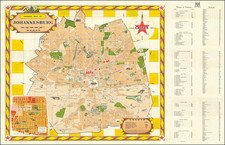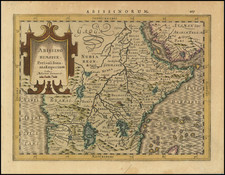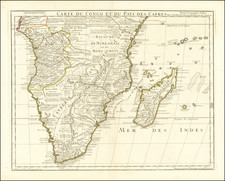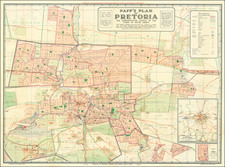Thematic Map of Highlighting Agriculture and Industry in Britain's African Colonies
Large thematic map illustrating the British Colonies in Africa, showing its history, agriculture and industry. '
The map delineates the geographic and political contours of British colonial holdings in Africa, marked against a backdrop of other European powers’ territories and independent regions. The vivid color scheme, detailed annotations, and iconography provide insights into the era's socio-political landscape, economic activities, and transportation networks.
The historical context surrounding this map is pivotal for understanding the colonial dynamics and the subsequent shaping of modern African states. During the 1940s, Africa was largely under European colonial rule, with Britain controlling vast swathes of the continent. The map captures the zenith of British imperialism in Africa, reflecting the geopolitical realities of the time, including the administrative divisions, key cities, and economic resources exploited under colonial rule. This period was marked by increasing tensions between colonial powers and emerging nationalist movements, setting the stage for the decolonization wave that would sweep the continent in the following decades.
The detailed annotations and symbols employed in the map are of particular interest, revealing the economic interests driving colonization – such as mineral resources, agricultural products, and trade routes – alongside the infrastructural developments of the time, including railways, roads, and ports. These elements underscore the exploitative nature of colonial rule, while also highlighting the infrastructural legacies that would influence post-colonial development.
The historical table provided alongside the map of British Colonies in Africa from the 1940s offers a chronological summary of significant events in South African history, spanning from the mid-17th to the early 20th century. It traces the establishment, conflict, and transformation within the region, particularly highlighting the shifts between Dutch and British control, indigenous conflicts, and the path towards the formation of the Union of South Africa.
The timeline begins with the Dutch East India Company establishing a port of call at Cape in 1652, marking the start of European involvement in Southern Africa. It notes key developments such as the construction of the Cape Castle, the influx of Huguenots, and multiple conflicts with the indigenous Kaffir (a term now considered offensive) populations, reflecting the turbulent colonial encounters and the expansionist policies of the European powers.
Significant British milestones include the first and second occupations of the region, the start of British immigration in 1820, and the eventual establishment of British sovereignty over strategic regions. The chronology also covers the Boer Wars, reflecting the struggle between the British Empire and the Afrikaner states for control over the region, culminating in the formation of the Union of South Africa in 1910 under British dominion.
Furthermore, the table outlines economic developments such as the discovery of gold and diamonds, which had profound impacts on the region's social fabric and colonial dynamics. It also notes the founding of key cities and administrative changes, including the establishment of self-government in the Cape Colony and the acknowledgment of the Transvaal Republic.














![[ First Modern Map of Southern Africa ] Tabula Moderna Secunde Porcionis Aphricae](https://storage.googleapis.com/raremaps/img/small/66800.jpg)

![[South African Republic, Orange Free State, Natal, Basutoland, etc.] The Absent-Minded Beggar](https://storage.googleapis.com/raremaps/img/small/78441.jpg)